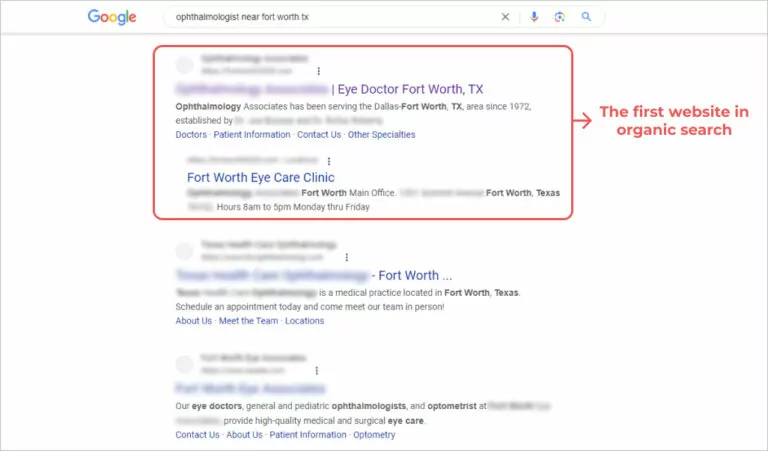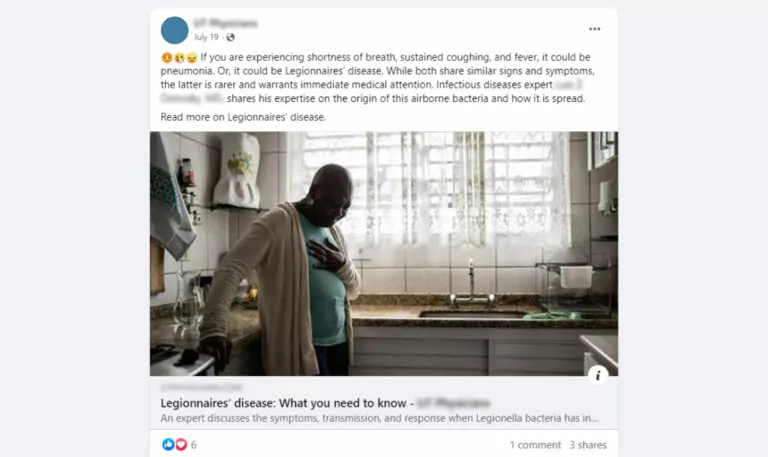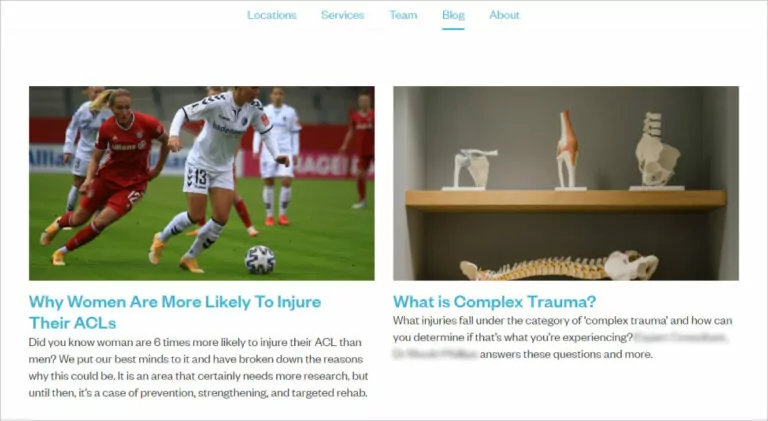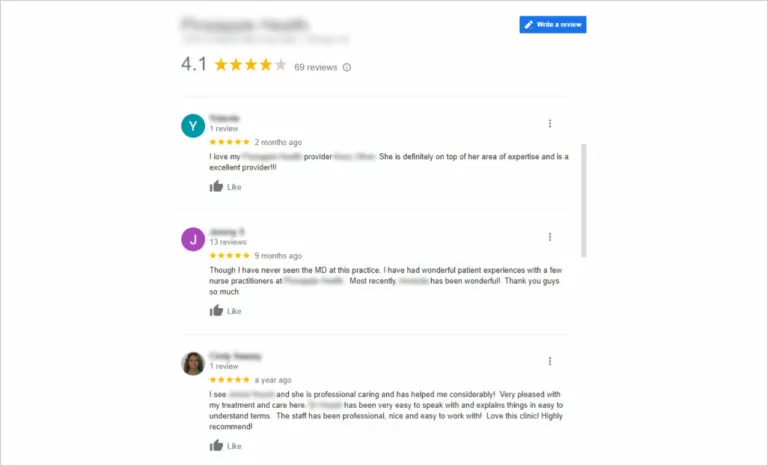In the rapidly evolving healthcare industry, marketing has become more crucial than ever. It’s no longer enough for healthcare organizations to simply provide quality care; they must also effectively reach and attract patients or clients. This is where a good healthcare marketing strategy comes into play.
A healthcare marketing strategy encompasses a comprehensive plan that goes beyond just marketing: it’s a holistic approach that incorporates the analysis of your goals as a healthcare organization, identifying your target audience, defining your unique value proposition, and determining the right mix of marketing methods that should be used.
The main aim of healthcare marketing strategies is to set your organization apart from the competition in today’s busy market. A carefully crafted approach that focuses on patient engagement and retention can be key to your business’ success.
In this post, we’ll look at:
- The main aims of healthcare marketing strategies
- The four components of a successful healthcare marketing strategy
- Key tactics in healthcare marketing, including a successful case study incorporating key elements of healthcare marketing strategies’

What’s the Main Goal of a Healthcare Marketing Strategy?
The main goal of any healthcare marketing strategy is to attract, engage, and retain patients.
Marketing strategies for healthcare involve developing a cohesive plan that encompasses various tactics and channels to reach and communicate with target audiences effectively. It includes understanding the needs and preferences of the target audience, differentiating oneself from competitors through a unique value proposition, and selecting the appropriate marketing mix.
Having a well-defined marketing strategy enables healthcare providers to not only increase patient numbers but also improve patient satisfaction rates and enhance overall brand reputation among healthcare consumers. It helps in effectively showcasing services, establishing trust, and building lasting relationships with patients.
Additionally, a solid marketing strategy allows healthcare professionals to adapt to changing market dynamics and stay ahead of the curve. By leveraging digital marketing techniques, such as search engine optimization (SEO), pay-per-click (PPC) advertising, social media marketing, and content marketing, providers can reach prospective patients where they are most active.
What are the 4 Components of a Successful Healthcare Marketing Strategy?
A successful marketing strategy for healthcare consists of four key components that work together to drive growth and success. Let’s explore each component in more detail.
1. Goal Setting

When setting goals for your healthcare marketing strategy, it’s important to be specific, measurable, achievable, relevant, and time-bound (or S.M.A.R.T). For example, a specific goal might be to increase patient numbers by 10% in the next year; make it measurable by tracking the number of new patients you see each month, achievable by ensuring you can realistically achieve it with the resources you have available, relevant by aligning it with your overall business goals, and time-bound by giving it a specific deadline.
2. Identifying Target Audience

Once you know your goals, you need to identify your target audience. This is the group of people you want to reach with your marketing messages. To do this, you need to understand their needs, behaviors, and preferences. You can create patient personas to help you get to know your target audience better. A patient persona is a fictional representation of your ideal patient. It’s based on real data about your target audience, such as their age, gender, location, health concerns, and lifestyle habits.
3. Unique Value Proposition

What makes your practice unique? What sets you apart from other healthcare providers in your area? Your unique value proposition (UVP) is what answers these questions. It’s a statement that summarizes what makes your practice special and why patients should choose you. Your UVP should be clear, concise, and memorable.
4. Marketing Mix
There are many different marketing methods available, both digital and traditional. The right mix for your practice will depend on your goals, target audience, and budget. Some common digital marketing methods include search engine optimization (SEO), pay-per-click (PPC) advertising, social media marketing, and email marketing.
Choosing the right mix depends on factors such as your target audience’s preferences, budget constraints, and the effectiveness of each method in achieving your goals. If you’re wondering what’s best for you, consider reaching out to a digital marketing agency like Comrade Digital Marketing to get expert advice from a team that knows how to help your business thrive.
Key Tactics in Healthcare Marketing Strategies
You need to be proactive in your healthcare marketing strategies in order to reach and attract new patients. There are a number of key tactics that can be used to effectively market your practices, including:
- Digital marketing: Digital marketing is essential for any healthcare provider who wants to reach a wider audience. There are a number of different digital marketing tactics that can be used, such as search engine optimization (SEO), pay-per-click (PPC) advertising, email marketing, and content marketing.
- Patient engagement: Patient engagement is another key tactic for healthcare marketers. By encouraging satisfied patients to share their experiences and utilizing positive reviews, healthcare professionals can establish trust and credibility with potential patients.
1. Digital Marketing for Healthcare Providers
The importance of a strong online presence can’t be overstated. Patients are increasingly turning to the Internet to research healthcare providers and make decisions about their care. A well-optimized website, active social media profiles, and positive online reviews are all essential for building a robust online presence for your healthcare practice.
SEO

Optimizing your website for search engines can improve its visibility in search engine results. By incorporating relevant keywords, creating high-quality content, and optimizing website structure, healthcare service providers can increase their organic search rankings and drive more traffic to their site.
Your practice deserves to be seen! Get found faster and increase appointments with high-impact ophthalmology SEO that works.
PPC

PPC advertising allows providers to place targeted ads on search engine results pages or social media platforms. By bidding on specific keywords, healthcare marketers can ensure that their ads are displayed to their target audience, increasing the chances of attracting potential patients.
Social Media Marketing

Social media is a great way to connect with prospective patients and build relationships. By creating engaging content, participating in online conversations, and sharing positive stories about your practice, you can position yourself as a trusted source of information and build trust with a healthcare consumer.
Content Marketing

Sharing valuable and educational content through blogs, videos, infographics, and e-books can position medical service providers as industry experts and thought leaders. By creating content that addresses patients’ pain points and provides valuable solutions, medical services providers can attract, engage, and retain patients.
2. Patient Engagement
Encouraging satisfied patients to share their experiences is a powerful marketing tactic for healthcare services that can significantly impact healthcare professionals. Positive reviews and testimonials from existing patients can help establish trust, credibility, and social proof, influencing potential patients’ decision-making process. Here are key strategies for patient engagement:
Encourage Reviews
After providing a positive patient experience, proactively ask satisfied patients to leave reviews or testimonials on platforms such as Google, Yelp, or your practice’s website. Positive reviews not only contribute to a strong online reputation for medical practices, but also attract new patients who rely on reviews for their healthcare decisions.
Utilize Reviews

Share positive patient reviews on your website, social media platforms, and other marketing channels to showcase the experiences and satisfaction of your patients. Highlighting real stories and testimonials can help build trust and credibility among potential patients.
Measuring and Analyzing Marketing Efforts for Healthcare Organizations
For healthcare organizations, measuring and evaluating their marketing strategies is important for making educated decisions. Healthcare marketers can monitor the efficacy of these campaigns by observing KPIs such as website visits, conversion rates, and patient satisfaction levels.
Data visualization tools help you understand data better and allow for informed tweaking of various elements to create the best healthcare marketing strategy possible. At Comrade, we take reporting and transparency very seriously. For each client, we create detailed, monthly reports that dive deep into our clients’ data- ensuring they have a clear picture of how our efforts are helping them.
1. Tracking Key Performance Indicators (KPIs)

Tracking KPIs provides valuable insights into the performance of your marketing efforts. These indicators are specific metrics that help you measure the success of your campaigns and goals. Here are some essential KPIs for healthcare organizations to track:
- Website traffic: Monitor the number of visitors coming to your healthcare website, which pages they are visiting, and how long they stay. This measurement helps gauge the effectiveness of your marketing strategies for healthcare in driving online engagement.
- Conversion rate: Measure the percentage of website visitors who take a desired action, such as booking an appointment, subscribing to a newsletter, or downloading a resource. Tracking conversion rates helps evaluate the effectiveness of your website and calls-to-action in converting visitors into leads or patients.
- Cost per Acquisition (CPA): Calculate the average cost required to acquire a new patient or lead. This metric helps measure the efficiency of your marketing campaigns and budget allocation.
- Social media engagement: Analyze the number of likes, comments, shares, and followers on your social media platforms. This data provides insights into the level of engagement and interest from your target audience.
Digital marketing can be easier with the Comrade Digital Marketing Agency. Schedule a free consultation.
2. Making Data-Driven Marketing Decisions based on Analyzed Data
Once you’ve tracked the relevant KPIs, the next step is to analyze the data and make informed marketing decisions. Here’s how you can use the analyzed data to optimize your healthcare marketing strategies:
- Identify successful campaigns: Analyze which healthcare marketing strategies, campaigns, or tactics are generating the best results by comparing KPIs. This allows you to double down on the most effective strategies and allocate resources accordingly.
- Refine target audience: Analyzing demographic and engagement data helps you understand the preferences, behaviors, and needs of your target audience. This insight allows you to tailor your marketing messages and campaigns to resonate with your audience and drive better results.
- Optimize ROI: Targeting key performance gaps enables cost reduction and a higher healthcare marketing ROI. For example, if a campaign experiences a high CPA, fine-tuning targeting, messaging, or landing pages can increase conversion rates and reduce overall acquisition expenses.
- Plan future campaigns: Analyzing historical data provides valuable insights for planning future campaigns. By understanding which campaigns or marketing initiatives have performed well in the past, you can replicate successful tactics and avoid previous mistakes.
Case Study: Successful Healthcare Marketing Strategies in Work
The Kraff Eye Institute, led by Dr. Coleman Kraff, is a premier center for LASIK and advanced vision correction in Chicago. They faced challenges acquiring new patients due to their former healthcare marketing campaign limitations. To overcome this, they sought help from Comrade.
Goal setting: During the discovery phase, Comrade worked closely with the Kraff Eye Institute to identify their goals for growth. The primary objective was to increase new patient acquisition and expand the institute’s reach in a highly competitive market.
Identifying target audience: Comrade conducted a thorough analysis of clinical data to identify the target audience for the Kraff Eye Institute. They recognized that potential patients seeking LASIK and other vision correction treatments were individuals who valued their quality of life and were actively seeking reliable, experienced specialists in the field.
Unique value proposition: Comrade understood that the Kraff Eye Institute’s unique value proposition lay in Dr. Kraff’s expertise and reputation as a leader in the industry. The marketing campaign highlighted his pioneering work, exceptional patient care, and the institute’s state-of-the-art facilities, all of which set them apart from competitors.
Marketing tactics: Comrade implemented a range of digital marketing tactics to achieve the goals of the healthcare organization. They created compelling content that showcased Dr. Kraff’s expertise and addressed common patient concerns. By optimizing the website with targeted keywords and implementing an effective PPC strategy, they ensured maximum visibility in search engine results. Social media ads were utilized to engage with the target audience and generate brand awareness.
Results: The results achieved by Comrade’s digital marketing campaign for the Kraff Eye Institute were remarkable. Despite the challenges posed by the COVID-19 pandemic, Comrade successfully delivered a 45% increase in qualified leads within a year. This accomplishment was accompanied by an impressive total traffic increase of 163%. The Kraff Eye Institute not only experienced growth but also solidified its position as a leading provider of LASIK and vision correction treatments in the market.

Get in touch to see how our digital marketing solutions can take your business to the next level
Cure Your Growth Pains: Utilize Our Expert Healthcare Marketing Strategy Today
Are you struggling to attract new patients and achieve your growth goals in the competitive healthcare industry? It’s time to take action and develop an effective healthcare marketing strategy. In our recent article, we highlighted the main points to consider when crafting a robust marketing plan for your healthcare practice.
We emphasized the importance of understanding your target audience and their needs, identifying your unique value proposition, and leveraging digital marketing channels to reach potential patients. Additionally, we discussed the significance of search engine optimization (SEO), content creation, and social media marketing in driving patient engagement and brand awareness. Now it’s time for you to get started.
Don’t let growth pains hinder your success. Start developing your own healthcare marketing strategy today and unlock new opportunities for your practice. Contact us now to learn how our expert team can help you navigate the ever-evolving landscape of medical marketing and create a strategy that brings in new patients and greater revenue.
